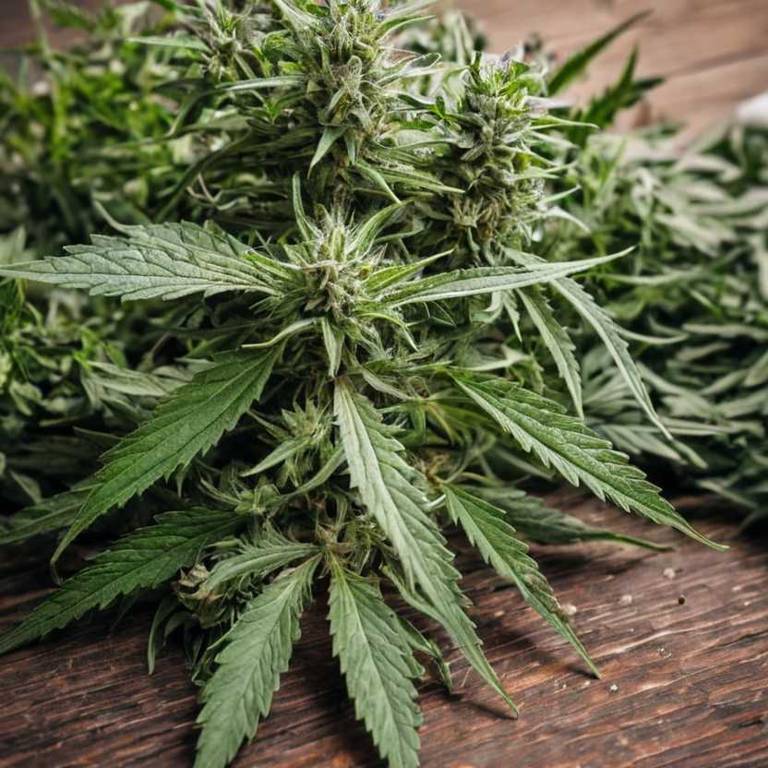By Leen Randell
Updated: Jul 20, 2024
10 Medicinal Constituents Of Cannabis Sativa (Marijuana)

Cannabis sativa has active constituents such as cannabinoids (THC and CBD), flavonoids, and terpenes.
These medicinal properties have been found to have therapeutic effects, including pain relief, reduced inflammation, and anxiety reduction.
CBD has been shown to improve quality of life for individuals with chronic pain, multiple sclerosis, and epilepsy, allowing them to live more independently and with increased comfort.
This article explains in details the 10 best active constituents of Cannabis sativa.
1. Thc
Cannabis sativa THC (Tetrahydrocannabinol) is the primary psychoactive compound found in this plant species.
THC is responsible for producing the "high" or euphoric effects associated with cannabis use.
It is a potent cannabinoid that binds to cannabinoid receptors in the brain and central nervous system, altering perception, mood, and cognitive function.
2. Cbd
Cannabis sativa CBD is a non-psychoactive compound found in the plant.
It is one of the most well-known and widely used cannabinoids, extracted from the flowers, leaves, and seeds of the Cannabis sativa plant.
CBD has gained popularity for its potential therapeutic benefits, including reducing inflammation, anxiety, and pain, as well as promoting sleep and relaxation.
3. Cbg
Cannabis sativa CBG (cannabigerol) is a non-psychoactive cannabinoid that can be extracted from the plant.
It's often referred to as the "mother" of all cannabinoids because it's the precursor molecule that converts into THC and CBD through heat or light exposure. CBG has been shown to have potential therapeutic benefits, including reducing inflammation, improving appetite, and alleviating symptoms of anxiety and depression.
Research is ongoing to fully understand its effects on the body and mind.
4. Cbc
Cannabis sativa CBC (Cannabichromene) is a non-psychoactive cannabinoid found in the cannabis plant.
It is the third most abundant cannabinoid after THC and CBD and has been shown to have numerous therapeutic benefits without producing a high or intoxicating effect.
CBC has been reported to have anti-inflammatory, antimicrobial, and analgesic properties, making it a potential treatment for various health conditions.
5. Thcv
Cannabis sativa THC-V (tetrahydrocannabinol varin) is a non-psychoactive cannabinoid compound found in the cannabis plant.
Unlike its more well-known counterpart THC (tetrahydrocannabinol), which produces the "high" associated with cannabis use, THC-V has been shown to produce feelings of calmness and relaxation without any intoxicating effects.
This unique characteristic makes it a promising compound for therapeutic applications, particularly in the treatment of anxiety disorders.
6. Cbdv
Cannabis sativa CBDV (cannabidivarin) is a non-psychoactive compound found in the cannabis plant.
Unlike THC, which produces a high, CBDV does not have psychoactive properties and can be used to treat various health conditions such as seizures, anxiety, and inflammation without inducing intoxication or addiction.
Its therapeutic potential has been extensively studied, revealing its ability to interact with the endocannabinoid system and promote overall well-being.
7. Cbga
Cannabis sativa cbga is a non-psychoactive cannabinoid found in the cannabis plant.
It is one of over 100 cannabinoids present in the plant and plays a crucial role in regulating the growth and development of the plant. CBGA, or cannabigerolic acid, is a precursor to THC (tetrahydrocannabinol) and CBD (cannabidiol), the two most well-known psychoactive compounds found in cannabis.
It has been shown to have anti-inflammatory properties and may be effective in treating various health conditions.
8. Thca
Cannabis sativa thca is a non-psychoactive cannabinoid found in the plant.
Tetrahydrocannabinolic acid, or THCA for short, is the precursor to THC, the primary psychoactive compound in cannabis. While THC is known for its intoxicating effects, THCA remains neutral and does not produce a high when consumed.
Instead, it is believed to provide potential therapeutic benefits, such as reducing inflammation and alleviating pain, without the euphoric effects typically associated with cannabis use.
9. Cbca
Cannabis sativa cbca is a species of the cannabis plant that is native to Central Asia and Eastern Europe.
It is an annual herbaceous plant that can grow up to 18 feet tall and has narrow leaves with serrated edges.
CBDA (cannabidiolic acid) is a non-psychoactive compound found in high concentrations in this strain, which is often used to treat various medical conditions such as chronic pain, inflammation, and anxiety.
10. Terpinolene
Cannabis sativa terpinolene is a lesser-studied terpene found in the plant.
It is believed to have sedative and analgesic properties, making it potentially useful for promoting relaxation and reducing pain.
Terpinolene has also been shown to exhibit antimicrobial and antioxidant activities, which could contribute to its potential medicinal applications.